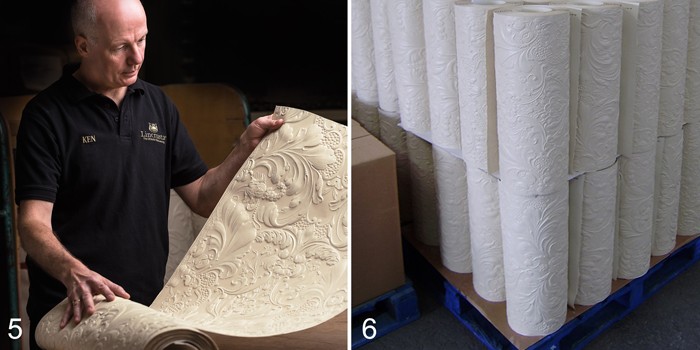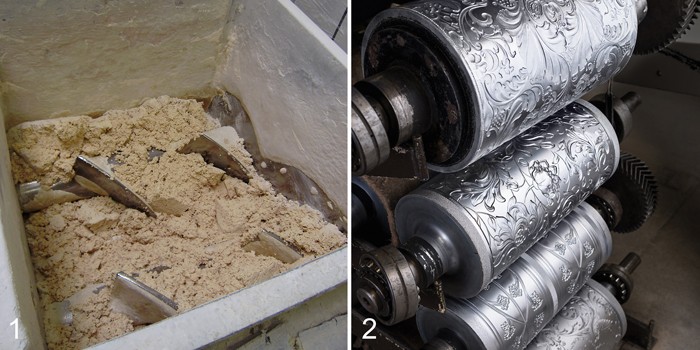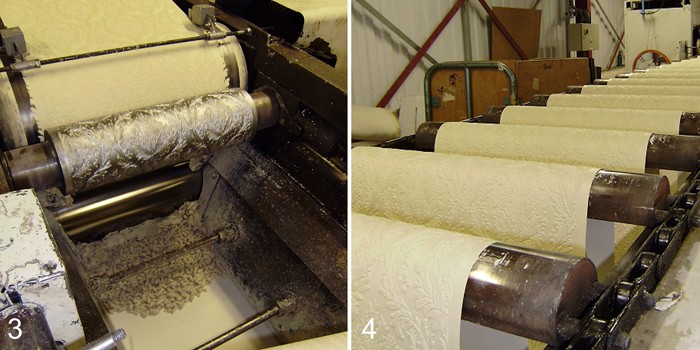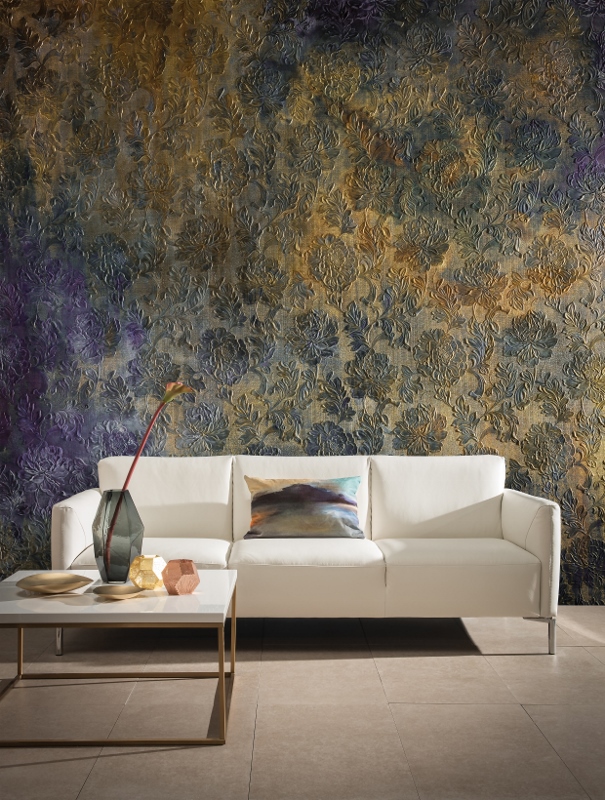Step by Step: Lincrusta
During December Design Insider will explore the production processes behind our members’ most unique and innovative designs.
In our last post, Futureglass shared their expertise in glass design with their bespoke pedestal table. Today we move to a completely different industry with Lincrusta as we follow their process from design all the way through to seeing the completed wallcoverings.
Lincrusta is durable, luxurious and extremely tactile. Made the same way today as it was over a hundred years ago, Lincrusta has a range of designs perfect for the look you want to create, whether its Oriental, 50’s, retro, Edwardian gentility or Georgian splendour.
1. Lincrusta’s key ingredient, a linseed gel similar to that used in linoleum flooring, is mixed with waxes and a fire retardant filler. It’s then steam-heated before being extruded as pellets of putty.
2. Each Lincrusta design is produced using a steel roller. Rollers are hand-engraved in Germany, with new designs taking up to 240 hours to engrave, depending on complexity.
3. The putty is compressed onto a base paper, before being embossed with a Lincrusta design.
4. After printing, the finished product passes through a festoon system, allowing cooling and curing prior to inspection and packing.

5. After cooling, the product is inspected whilst being rolled and cut into 10m long rolls. Further hand inspection takes place manually down the inspection table.
6. The finished rolls are left to cure for several days before being packed and sent to our warehouse ready for dispatch to clients worldwide.
Lincrusta produces their dramatic wallcoverings in the same way it has for over a century, however it has now developed a formula in order to meet stringent fire safety ratings. In October 2016 Lincrusta launched its new fire retardant products. Read more about it here.







